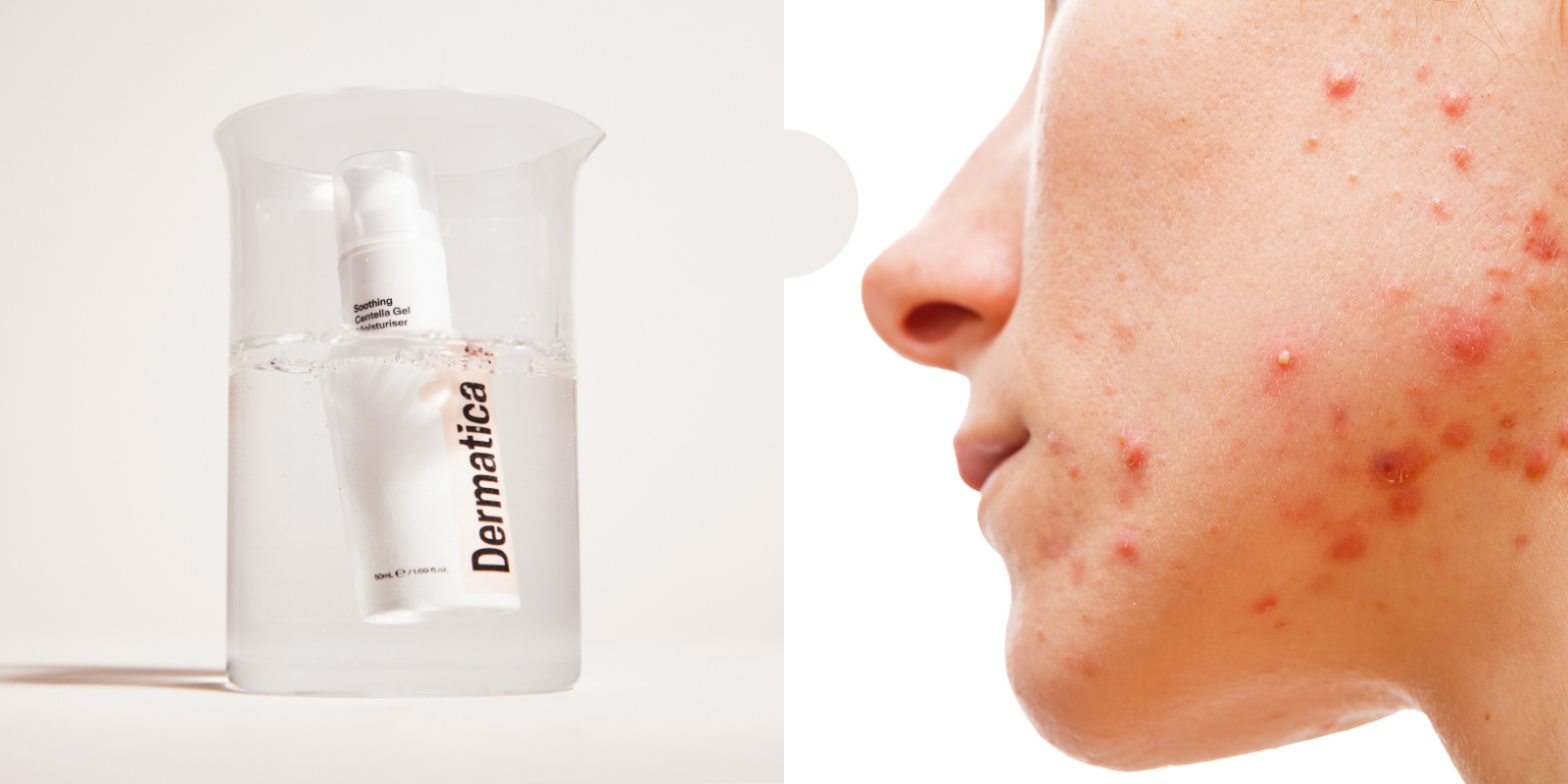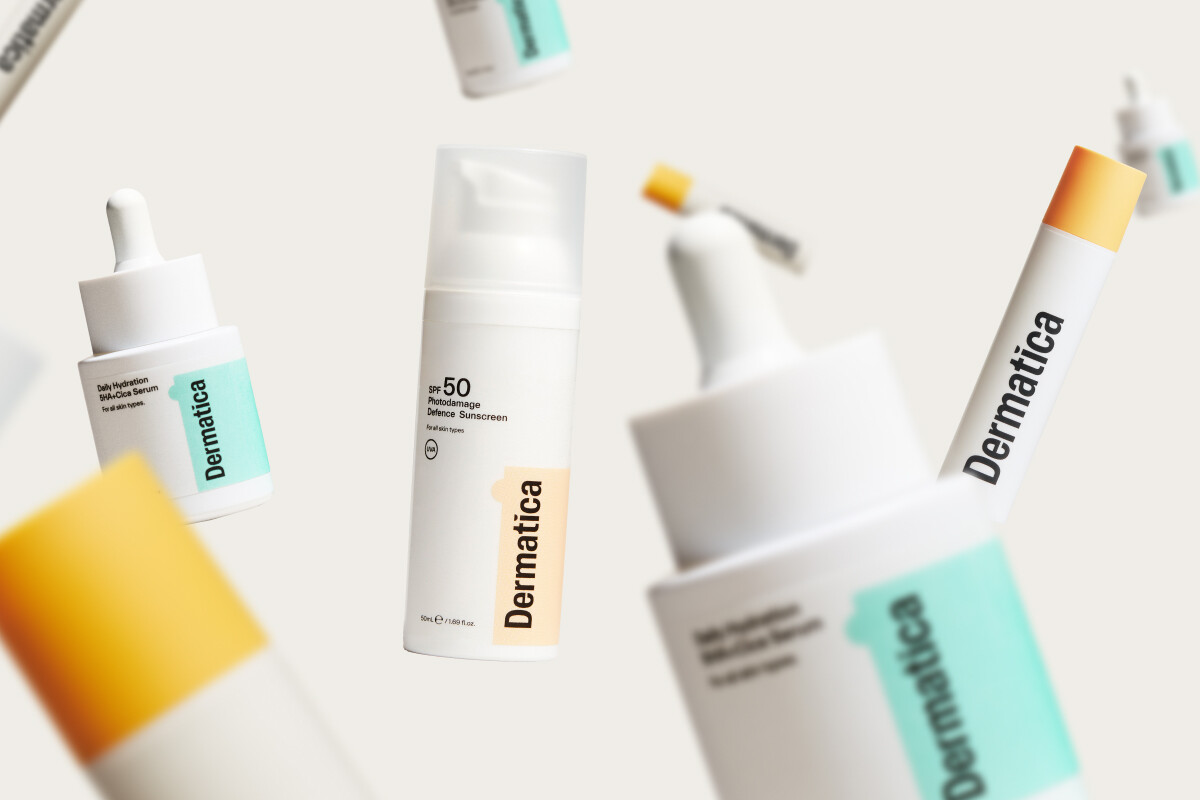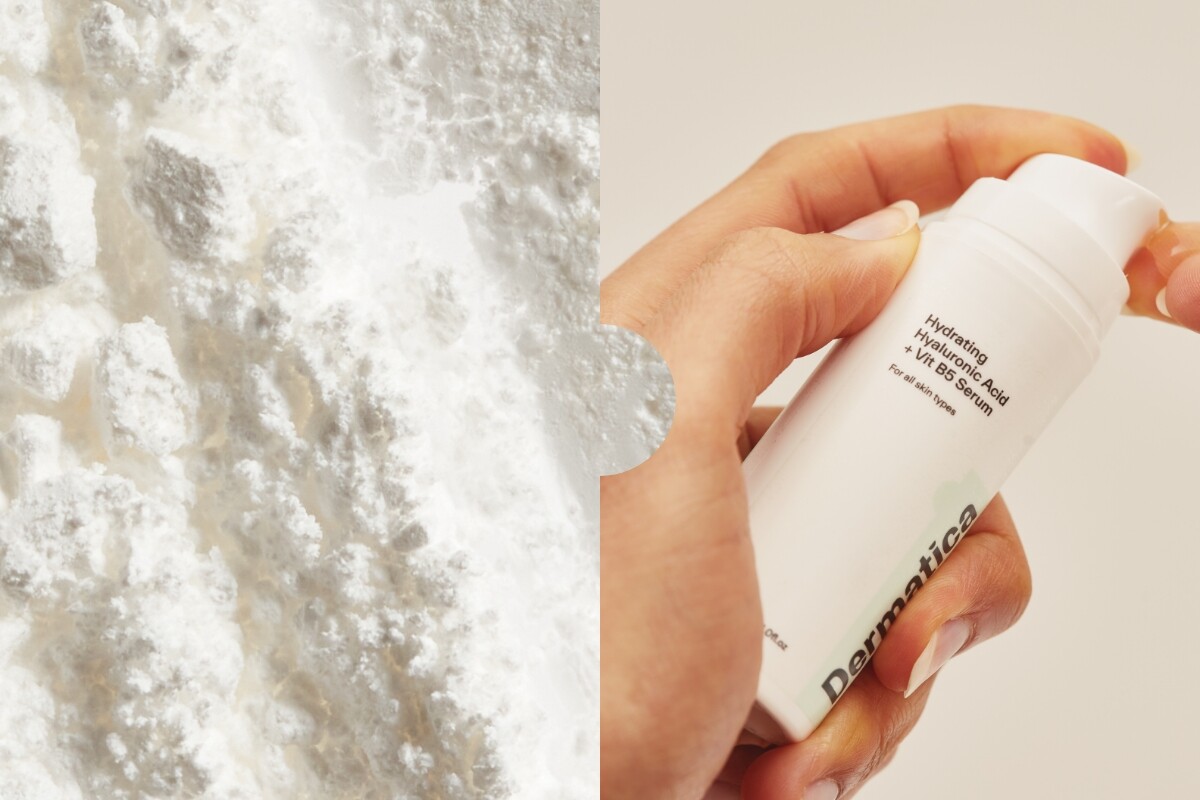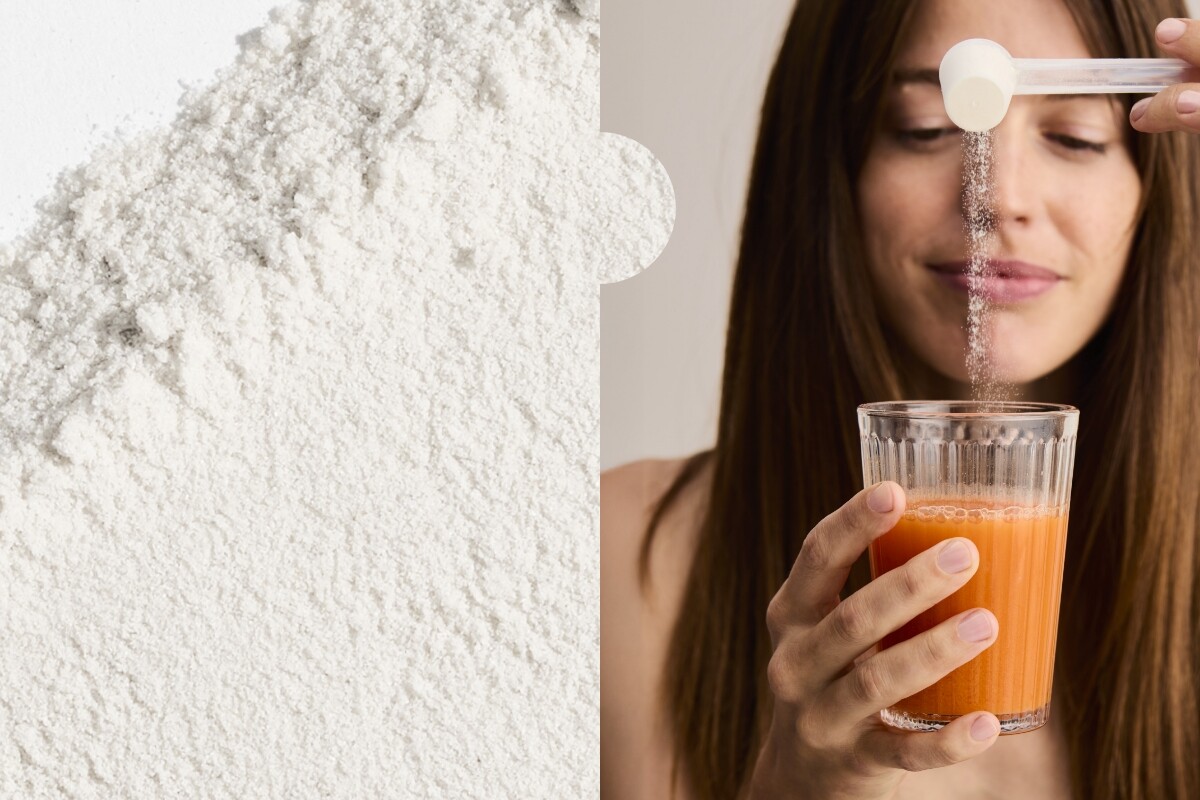Living with hormonal acne can feel like you’re stuck in a vicious cycle. Not only is the frequent recurrence frustrating, it can take an emotional toll – affecting your self-esteem, self image and even your quality of life. Around 3 in 10 adults experience acne in adulthood, so if this includes you, know that you’re not alone. (1)
However, with professional help, it’s not all doom and gloom. There are science-backed, long-term solutions that we use in professional practice to effectively identify, understand and treat hormonal acne. To understand more about what hormonal acne is, and which options could help you, keep reading.
Why Is It Called Hormonal Acne?
Hormonal acne – also known as adult female acne – is a form of acne vulgaris. Although it’s different from acne in teenage girls, it can be just as common.
This type of acne affects females over the age of 25, and is triggered by a hormonal imbalance, hence the name. Symptoms for adult female acne can either have persisted from your teenage years, appeared for the first time in your twenties, thirties, forties, or can even happen during perimenopause.
Hormonal acne is caused by excessive levels of androgen hormone in the body (hyperandrogenism) and has a cyclic component, which means acne flares usually occur around the time of your menses (period). Symptoms are most common on the face, but it can also affect the body. Hormonal imbalances are one of the biggest drivers behind acne in adult women. (2)
Because it’s hormonal, it’s internal by nature, so it’s important to manage and moderate symptoms with professional guidance rather than using DIY solutions. This will give you the most control since your treatment is personalised to what your skin can handle, and ultimately lessens the chance of irritation, inflammation and permanent scarring.
How It Presents
Hormonal acne tends to have a “U” distribution, also known as a “beard” distribution, due to it commonly being found around and along the lower jawline.
Your acne may or may not always be present, however flares – which is when your symptoms get worse – usually occur around the time of your period or just before. (2)
Key Differences Between Teen Acne & Hormonal Acne
Teen Acne: T-Zone is more affected (nose, chin and forehead). Typically, you see comedones, papules and deeper nodules.
Hormonal Acne: Affects lower cheeks, mouth and jawline. Appears in a “U” shape, and more often is characterised by deeper nodules and cystic acne than comedones.
Lesions don’t want to come to a head, and are often painful, red or inflamed. You notice more flares around your period, and dark spots or red marks are usually present after the acne is resolved.
Who Gets Hormonal Acne?
Hormonal acne can happen to all of us, but you may be more prone if your family has a history of acne. (3)
Changes in contraceptive pills, pregnancy, postpartum, hirsutism (excessive hair growth on the face, hair and back) and PCOS (polycystic ovary syndrome) may increase your likelihood of hormonal acne flares, too. (4)
Although results from studies have had mixed results, diet could also be a risk factor. For example if you eat a lot of high sugar or high glycaemic index (GI) foods, these can spike blood sugar levels, causing an inflammatory response in the body. You can read more about the potential links between diet and acne here.
Studies have also looked into the potential link between hormonal imbalances and physical and psychological stress. Hormone imbalances are heavily influenced by your stress levels. Though healthy levels of cortisol – your body’s stress hormone – can be useful, too much can stimulate androgen production (male hormone) in your body. If cortisol levels stay too high for long periods of time, the elevated androgen levels can increase your skin’s oil production, which may exacerbate the acne lesions and the painful cystic acne you experience. (5)
Why Hormonal Acne Happens
As its name suggests, hormonal acne occurs because of hormonal stimulation of your skin’s sebaceous glands (oil glands).
The imbalances are due to elevated levels of androgen hormones. These are male hormones (e.g. testosterone). Healthy levels of androgen in women are normal and necessary for many different reproductive functions, including the production of oestrogen. However, when female bodies produce more than the normal levels, it can stimulate your sebaceous glands to produce excess sebum (oil) – leading to deep, cystic acne lesions. (4)
If your acne symptoms are persistent, but not always monthly, there’s still a hormonal imbalance that needs to be addressed through treatment. Left untreated, adult acne can leave post-inflammatory hyperpigmentation (dark spots) that can take months to fade, or scars in the form of noticeable indentations that are difficult to correct. (6)
Hormonal Acne Treatment Options
Now onto the solutions. Treatments will depend on the severity of acne, and include:
– Topical treatments for mild to moderate acne. These are used for both persistent and intermittent acne flares.
– A combination of topical and oral medications. This is for severe acne flare-ups, or for mild-to-moderate acne symptoms that haven’t responded to topical treatment alone. This should always be recommended by a dermatology professional first.
– A simplified skincare routine with just an oil-free cleanser and moisturiser alongside your treatment. These should have gentle ingredients that nourish your skin barrier without clogging pores. Ideally they should also be formulated according to the NICE guidelines for sensitive skin, like the ones at Dermatica.
– A broad-spectrum sunscreen with at least SPF30+ to prevent inflammation from UV rays, dark spots and scarring. Choose one that’s non-comedogenic, fragrance free and compatible with active ingredients.
Topical Treatments
If your adult acne is deemed mild to moderate, topical hormonal acne treatments are usually enough. What’s more, they can also help you maintain clear, breakout-free skin long term. Effective topical treatments that a dermatology professional may recommend are:
Benzoyl Peroxide
Benzoyl peroxide prevents the formation of comedones (blackheads), kills acne-causing bacteria, and is effective at reducing inflammation in the skin.
Note: Watch that your clothes, towels and bedsheets don’t come into contact with benzoyl peroxide, as it can have a bleaching effect on fabrics. (7)
Retinoids, like Adapalene or Tretinoin
Adapalene is a first-line topical treatment for acne, due to it being less sensitive to light and suitable for sensitive skin, but tretinoin can also have a similar effect. Using retinoids like these can reduce the number of comedones and inflammatory lesions like cystic acne on your skin by up to 70%. However, they aren’t suitable if you are pregnant or breastfeeding.
Retinoids have the ability to increase skin cell turnover, which prevents clogged pores and acne lesions from forming. This exfoliation also helps calm inflammation and fade any post-inflammatory hyperpigmentation, as well as improve the appearance of uneven or textured skin.
Advised use is once daily, in the evening. You should see optimal results after 12 weeks. With continued use, retinoids can also prevent flares and maintain your results. (7)
Azelaic Acid
If you have reactive or sensitive skin, or you’re pregnant or breastfeeding, azelaic acid (AZA) may be a promising alternative treatment. Unlike prescription retinoids, azelaic acid is an over-the-counter treatment. You’ll find it in strengths of up to 20%, and it has fewer side effects than benzoyl peroxide or topical retinoids.
Azelaic acid has antibacterial, anti-inflammatory effects and boosts skin cell turnover, helping to reduce comedones and cystic acne.
You can use azelaic acid up to twice daily, and it’s suitable for long-term use. (8)
Oral Treatments
After assessing your skin, a dermatology professional may consider your hormonal acne to be severe. For example, if deep, cystic nodules are present. If so, they might recommend you use oral antibiotics alongside topical treatments for faster results.
Combining oral antibiotics with a topical treatment can target multiple acne symptoms at once, helping to clear cystic acne faster than just using topical treatments on their own. Their powerful antimicrobial and anti-inflammatory effects can also reduce new breakouts, side effects like “purging”, and acne breakouts on your body – helping to get your active acne under control quickly.
To prevent antibiotic resistance, your skincare provider should only recommend using them for a short length of time. If they recommend doxycycline or minocycline, a course usually lasts 16 weeks – although this may be continued for longer depending on how you respond to treatment. After that, your topical treatment can be used longer term to prevent the development of new breakouts and maintain your clear skin results. (9)
Oral antibiotics are a vital tool for anyone experiencing severe cystic acne, as they act fast – reducing your chances of developing post-inflammatory hyperpigmentation or permanent scarring.
Visit our website to find out more about whether a topical treatment for acne, or oral antibiotics, are right for you.
References
1. Tanghetti EA, Kawata AK, Daniels SR, Yeomans K, Burk CT, Callender VD. Understanding the Burden of Adult Female Acne. The Journal of Clinical and Aesthetic Dermatology [Internet]. 2014 Feb 1 [cited 2024 Jul 10];7(2):22–30. Available from: https://www.ncbi.nlm.nih.gov/pmc/articles/PMC3935648/
2. Bagatin E, Freitas THP de, Rivitti-Machado MC, Ribeiro BM, Nunes S, Rocha MAD da. Adult female acne: a guide to clinical practice. Anais Brasileiros de Dermatologia [Internet]. 2019 Feb [cited 2019 Oct 28];94(1):62–75. Available from: https://www.ncbi.nlm.nih.gov/pmc/articles/PMC6360964/
3. Anaba EL, Oaku RI. Adult female acne: A cross-sectional study of diet, family history, body mass index and premenstrual flare as risk factors and contributors to severity. International Journal of Women’s Dermatology. 2020 Dec;
4. Carmina E, Dreno B, Lucky WA, Agak WG, Dokras A, Kim JJ, et al. Female Adult Acne and Androgen Excess: A Report From the Multidisciplinary Androgen Excess and PCOS Committee. Journal of the Endocrine Society [Internet]. 2022 Feb 6 [cited 2022 Jul 5];6(3). Available from: https://www.ncbi.nlm.nih.gov/pmc/articles/PMC8826298/
5. Borzyszkowska D, Niedzielska M, Kozłowski M, Brodowska A, Przepiera A, Malczyk-Matysiak K, et al. Evaluation of Hormonal Factors in Acne Vulgaris and the Course of Acne Vulgaris Treatment with Contraceptive-Based Therapies in Young Adult Women. Cells. 2022 Dec 16;11(24):4078.
6. Khunger N, Agrawal D. A morphological study of acne scarring and its relationship between severity and treatment of active acne. Journal of Cutaneous and Aesthetic Surgery. 2020;13(3):210.
7. Kraft J, Freiman A. Management of acne. Canadian Medical Association Journal [Internet]. 2011 Feb 28;183(7):E430–5. Available from: https://www.ncbi.nlm.nih.gov/pmc/articles/PMC3080563/
8. Sauer N, Małgorzata Oślizło, Brzostek M, Wolska J, Katarzyna Lubaszka, Katarzyna Karłowicz-Bodalska. The multiple uses of azelaic acid in dermatology: mechanism of action, preparations, and potential therapeutic applications. Postępy Dermatologii i Alergologii [Internet]. 2023 Jan 1 [cited 2024 Apr 28];40(6):716–24. Available from: https://www.ncbi.nlm.nih.gov/pmc/articles/PMC10809820/
9. Del Rosso JQ. Oral Doxycycline in the Management of Acne Vulgaris: Current Perspectives on Clinical Use and Recent Findings with a New Double-scored Small Tablet Formulation. The Journal of Clinical and Aesthetic Dermatology [Internet]. 2015 May 1 [cited 2024 Jul 10];8(5):19–26. Available from: https://www.ncbi.nlm.nih.gov/pmc/articles/PMC4445892/
Cat Hyatt
Dr Cat Hyatt is a GP, working as Clinical Content Lead for Dermatica. She has a special interest in medical content and making healthcare information accessible and understandable for all.





